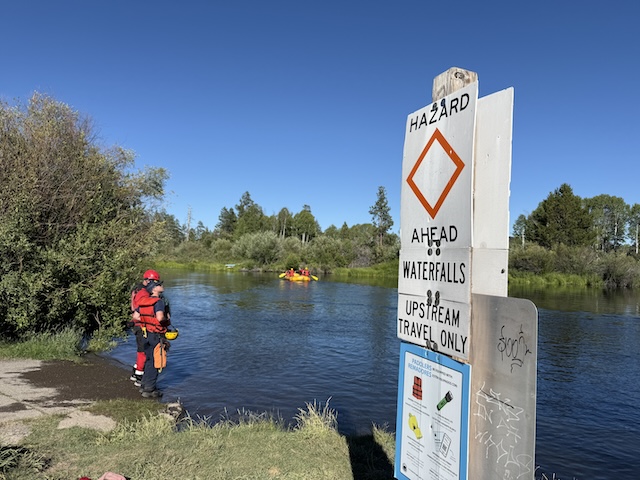Over-the-counter lice treatments may not be effective
Published 12:00 am Thursday, September 3, 2015

- Getty Images/BananaStock RFFather holding child while mother examines childs scalp for lice.
The past few weeks have seen a flurry of news articles about the emergence of so-called mutant head lice, bugs that can survive even several rounds of the chemicals designed to kill them.
To parents, it sounds terrifying. Those who study lice, however, are scratching their heads and wondering, ‘And?’
Trending
“We’ve known for decades that there are lice out there that have become resistant to these products,” said Richard Pollack, an immunology and infectious diseases instructor at Harvard University. “It’s perfectly expected and there is nothing surprising about it.”
For years, researchers have documented the gradual rise of insecticide resistance among some lice populations, some of which is indeed striking. The bugs have become increasingly immune to over-the-counter products specifically, which are far cheaper than their prescription counterparts, and don’t require a trip to the doctor.
The recent uproar started with a presentation in Boston by two researchers, John Marshall Clark, a chemistry and environmental toxicology professor at the University of Massachusetts Amherst and Kyong Sup Yoon, an assistant biological sciences professor at Southern Illinois University Edwardsville. They described recent research that found lice in at least 25 U.S. states to have the three genetic mutations — hence the loving nickname, mutants — necessary to give a louse what’s known as knockdown resistance, meaning it can’t be killed using over-the-counter products.
Oregon was among five states that hasn’t quite reached that level of resistance. Here, the researchers found lice samples had one, two or three of the mutations. Overall, 80 percent of the lice tested in Oregon had the mutations, compared with 100 percent in most other states, Clark said.
“You’re well on your way to becoming as resistant as the rest of the states,” he said.
Over-the-counter or Rx?
Trending
So, what does this mean for frantic parents trying to rid their kids of lice?
Clark and Yoon say the spread of knockdown resistance has made over-the-counter products so ineffective, parents should take their kids straight to the doctor for advice and, most likely, a prescription for more effective lice treatments.
That’s contrary to advice from the U.S. Centers for Disease Control and Prevention, which recommends parents first use the over-the-counter products as directed.
Pollack, of Harvard, doesn’t doubt knockdown resistance has reached the levels Clark and Yoon have identified, but he doesn’t think that means all lice wouldn’t respond to the over-the-counter treatments. He estimates over-the-counter products are now less than 50 percent effective, but they’re still worth a shot.
“I hear every week from a few people who tried them that they didn’t work for them, but I also hear from people who say, ‘Yeah, they worked fine,’” he said. “End of story. I’m confident there are populations of head lice out there that are susceptible.”
Dr. Darin Vaughan, Mosaic Medical’s clinical medical director for pediatrics, said over-the-counter products tend to work for the families he’s talked to. He generally recommends parents try those remedies first. If they don’t work, that doesn’t necessarily mean resistance is the problem, he said. It could also be the product wasn’t used properly or the patient doesn’t have head lice.
“Concluding that resistance is the reason for a treatment failure is often a mistake,” Vaughan said.
That said, it’s reasonable for parents to see their child’s pediatrician if they still feel comfortable, he said.
Over-the-counter lice removal products are generally made of one of two things: pyrethrins, a type of flower extract, or a synthetic version of that, called pyrethroid. Both bind to sodium channels and keep them open too long, creating a state of hyperexcitation that eventually kills the insects.
When an insect develops resistance, however, their sodium channels become desensitized to the chemicals, and they lose their ability to bind to keep the channels open.
If they don’t bind, they don’t kill the insect,” Clark said.
The main factor driving Pollack’s recommendation is money. Most over-the-counter products cost between $8 and $10, he said. Plus, you don’t need to spend money to see a doctor to get a prescription.
The prescription medications, by contrast, cost an average of $150, he said. For some families, that’s a drop in the bucket, he said.
“For other folks, it’s feeding your family for a week,” Pollack said. “This is one reason I suggest: Go the cheap route first. It might work.”
Pollack estimates prescription lice treatments are between 75 percent and 85 percent effective; none are 100 percent.
Widespread misdiagnosis
Once people believe they have head lice, buying products to get rid of them shouldn’t even be the first step they take, Pollack said. The first step, he said, should be making sure it’s actually head lice.
Pollack published a paper in 2000 in which he found that more than half of all children and adults treated for head lice didn’t actually have the infestation.
“Misdiagnosis is the rule rather than the exception,” he said. “It’s horrifying.”
School nurses are the best at identifying lice infestations, but even they got it wrong more than they got it right, Pollack said. Many times, the tiny specks they thought were lice are actually dandruff. Cookie crumbs. Other miscellaneous debris. Sometimes it’s a different kind of bug altogether, he said. Sometimes it’s lice eggs, but — for whatever reason — not the live bugs.
In the cases that are lice, people notoriously use the products incorrectly, Pollack said. Some people use the products only once, which will usually fail to get rid of all of the lice. He recommends one application the first day the lice are identified and a second on day 10. That will give all of the eggs sufficient time to hatch, he said. “You don’t want to treat five, eight, 12 times like some people do,” Pollack said.
While some have touted natural lice remedies — using concoctions with ingredients like apple cider vinegar and coconut oil, olive oil or mayonnaise — both Pollack and Vaughan agreed parents should steer clear of those, as there is no evidence they’re effective in treating the infection. It’s also not uncommon for parents to use essential oils in lice treatment. Pollack said he’d be open to the idea if there was any research that found it to work — but there isn’t. Out of curiosity, Pollack said he’s actually tested essential oil’s ability to kill lice in his lab. He said they don’t.
Some parents who claimed they used essential oils to kill their childrens’ lice have brought Pollack the alleged carcases from their trash bins.
“I look at them under the microscope and I snicker a little bit and I say, almost invariably, ‘These are not lice,’” he said. “‘They never were lice and they never will be lice.’”
Others have told him the oils killed the lice, but when he looks at the child’s hair, they’re still there. In these cases, in addition to prolonging their child’s discomfort, parents could unintentionally be exposing their child to harm if the ingredient concentrations are too high, he said.
Clark and Yoon have been criticized for taking research funding from companies that make prescription lice treatments. Clark defended their work, arguing they developed cutting-edge technology for use in lice research that companies want to use to test their products. He said the team did not receive industry funding for its research presented at the conference in Boston, but a company that makes prescription lice treatments provided lice samples used in the study.
Pollack said while he has no financial connections to any companies that make lice products, he said in the past they hired him to serve as a consultant who looked over their studies to determine whether they were well designed and whether the results looked impressive. It’s been more than a decade since a company that makes lice treatments paid him to perform research.
“I never have and probably never will endorse any product,” he said.
— Reporter: 541-383-0304,
tbannow@bendbulletin.com








